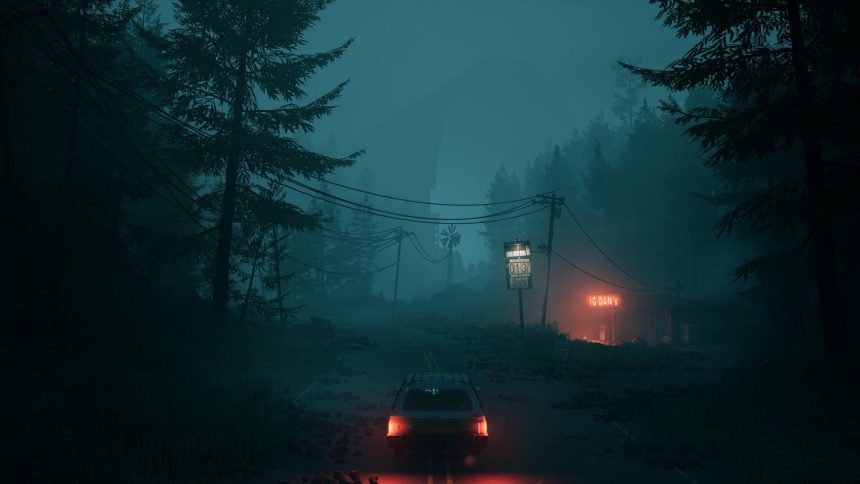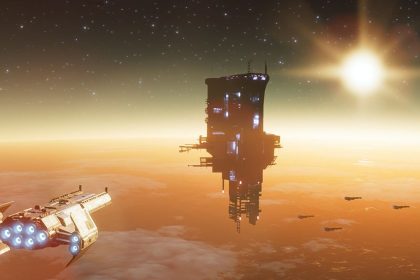Pacific Drive is a journey that straddles between being a punishing, grueling ordeal and an unconventional tale of affection between driver and vehicle, person, and the Zone.
Recently, I stumbled upon an old interview featuring Hidetaka Miyazaki, the mastermind behind renowned titles like Dark Souls and Elden Ring from FromSoftware. His words resonate deeply with the essence of Pacific Drive. “I’m quite a masochist, so when I develop games like these… this is precisely how I want the experience to be,” he articulated. “I crave to face challenges in this manner! It’s just that sometimes others fail to comprehend it; it’s for my own satisfaction.” His interviewer interjected incredulously, “Really? You yearn for demise deep within the forest, pummeled by a colossal mushroom?”
“Yes, indeed. And the cursed area… When I encounter curses–”
Interviewer: “You relish being bombarded by arrows?!”
Miyazaki: “It’s fulfilling. I derive pleasure from it, I just wanted to underscore that!”
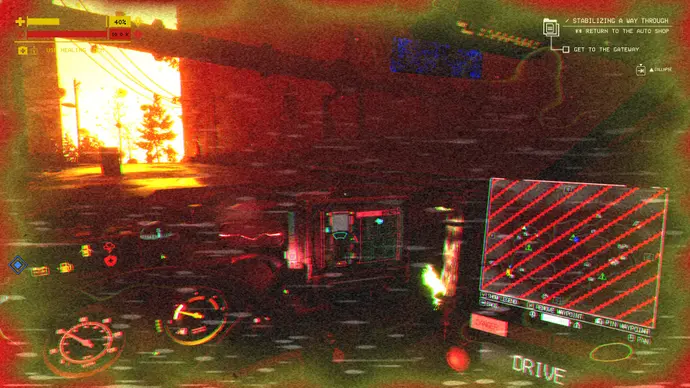
Hidetaka Miyazaki would undoubtedly embrace Pacific Drive. Throughout my expedition into the enigmatic and obstinate Zone of this game, I’ve encountered numerous trials – battered, crashed, zapped, and ensnared. From being tossed into a ditch to getting entangled in a tree and even enduring the occasional gentle knock on the head by my car’s own trunk while attempting to close it.However, in the perpetually damp environs of the Pacific Northwest, these ordeals seldom result in actual demise. Instead, they serve as a precursor to a bruised return to the safety of your modest garage.
Here, amidst the ritual of shaking out pockets filled with hastily gathered shrapnel, attending to self-repairs, and patching up the vehicle, the experience feels even more masochistic than succumbing to a barrage of arrows.
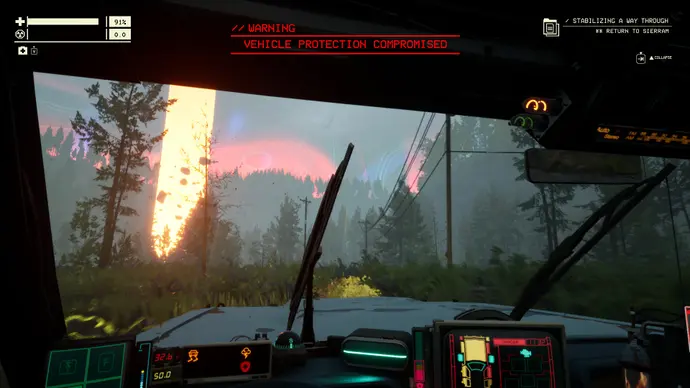
It’s a voluntary cycle of punishment that repeats incessantly, with survival merely hinging on evasion, never triumph. And unlike Miyazaki-san and his penchant for mushroom thrashings, I remain uncertain if I genuinely derive pleasure from it.
Pacific Drive is ostensibly categorized as a loot-and-craft survival game with a touch of environmental horror. Yet, it also embodies elements of comedy akin to the irreverent humor found in FromSoftware’s creations or more recently, Helldivers 2. It embraces aspects of a Roguelike structure, crucial for its standout moments but also contributing to its challenges.
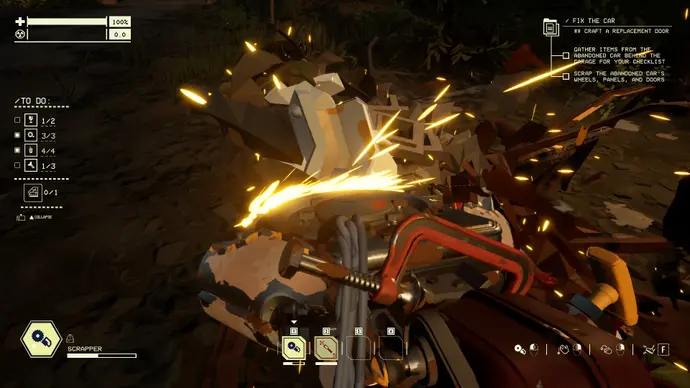
As one navigates the picturesque forests, situated inexplicably close to the legendary Zone – an abandoned government experimental site barricaded by warning signs, an aura of imminent catastrophe, and a towering 300-meter wall – an unexpected turn of events transports you inside.
Things take a bizarre turn, as is customary here, and your sole means of escape lies in a nearby car, under the guidance of a few eccentric Zone enthusiasts who communicate via radio. They direct you to the safe haven – a garage overseen by a seasoned and exceptionally blunt disembodied voice named Oppy, serving as your hub.
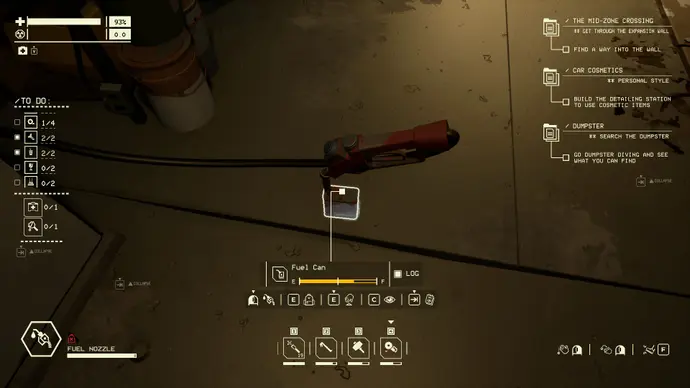
Here, you embark on scavenger hunts for radio antennas, reconnaissance missions, and most importantly, resource gathering to craft sturdier vehicle components, enabling further exploration – all with the ultimate objective of securing your escape while uncovering the mysteries en route.
The initial forays into the game – whether pursuing the main storyline or delving into alternative areas for resources or lore – prove to be grueling. Pacific Drive inundates players with a plethora of systems, initially overwhelming in their complexity. The expansive upgrade tree, diverse basic and advanced resources, and the myriad of tasks and prerequisites, outstrip the limited inventory space.
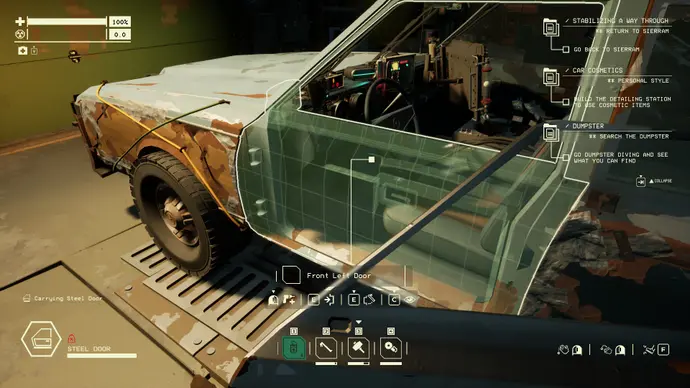
This complexity extends to the gameplay itself, intentionally nebulous, drawing inspiration from works like Roadside Picnic, Tales from the Loop, and Stalker, where the ineffable is portrayed with finesse.
Anchors, a vital component for returning from the Zone, also power the machine granting research upgrades. Locating these anomalies and deciphering their mechanics amidst the ever-changing landscape becomes a challenging yet rewarding endeavor.
The Zone presents a grim landscape – perpetually shrouded in darkness, with a day-night cycle that humorously mirrors the unpredictable weather of the Pacific Northwest. Natural hazards are exacerbated by Zone-induced phenomena, each sector presenting unique challenges.
Navigating through gusty winds, lightning strikes, and treacherous anomalies creates a tense atmosphere, compounded by an intentionally obtuse user interface, adding a layer of dark humor to the experience.
Despite the initial overwhelming nature of Pacific Drive, persevering through the challenges gradually yields rewards. Each run, whether successful or not, accumulates knowledge and resources, subtly shifting the balance of power.
Fuelled by newfound insights and materials, players develop a cautious coexistence with the Zone, navigating its perils with a sense of mutual respect. Mastery remains elusive, but a symbiotic relationship emerges, characterized by wary camaraderie rather than conquest.
In contemplating the central protagonist of Pacific Drive, one realizes its absence. The narrative unfolds from a first-person perspective, devoid of any visible character presence or dialogue. While the Zone and the vehicle possess distinct personalities – the former capricious, the latter somewhat mischievous – reducing the narrative to a singular character feels overly simplistic.
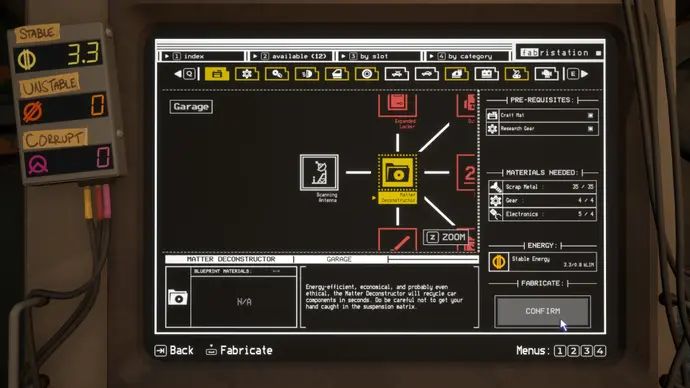
In truth, the garage emerges as the focal point of the experience. Here, amidst the trials of wilderness exploration, players engage in the true essence of Pacific Drive – tinkering, refining, and strategizing. The diagnostic system, particularly the identification and resolution of quirks, exemplifies the game’s brilliance.
These peculiar behaviors, initially vexing, evolve into puzzles to be deciphered, mirroring the problem-solving process of a real mechanic. The satisfaction derived from diagnosing and rectifying these quirks underscores the game’s appeal, transforming what initially appears as sadism into a form of masochistic enjoyment.
Pacific Drive epitomizes an arduous journey, characterized by relentless challenges and unforeseen setbacks. Yet, beneath its veneer of torment lies a compelling allure – a testament to the enduring appeal of voluntary suffering.

